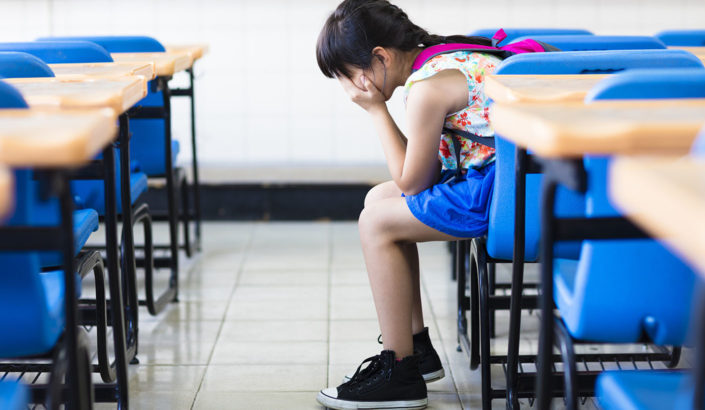How Do Emotions Affect Learning?
The major takeaway from the vast amount of research on emotions and learning is that emotions in the classroom matter—a lot. Here are a few examples:
Emotions influence where we focus our attention; indeed, things that carry more of an emotional charge for us are more likely to get our attention than things that don’t.
Two teachers in separate classrooms both teach a lesson on the process of turning a bill into a law in American government. One teaches it from a textbook, the other teaches it by engaging students in a discussion on a current issue relevant to students: the skyrocketing cost of higher education. The students in the first scenario memorize the process for the test, but then quickly forget it after. In comparison, the students in the latter scenario are emotionally engaged, writing letters to their Congressional representatives and applying what they learned to tackle other societal challenges.
Emotions help us remember and retrieve information. In fact, emotional memories are much more vivid and easily recalled than non-emotional memories.
The joy they experience through singing and dancing to songs about math facts helps students learn their multiplication tables quickly.
Our emotional state and our emotional reaction to academic content can affect our ability to reason.
One study found that participants who were in a positive mood more easily solved logic-oriented problems than those in a negative mood. In another experiment, researchers found that when faced with problems about spiders that required logical reasoning, participants who suffered from spider-phobia performed worse than those without this phobia.
Positive emotions help us to think more flexibly and creatively when faced with a problem to solve.
Before trying to solve the never-ending and seemingly impossible challenge of creating an organized system for student drop-offs in the morning, the principal leads her staff in a silly game that gets everyone laughing, putting them in a good mood. As a result, ideas for solving the issue abound and enthusiasm is high for testing several different methods.
Emotions help us to learn, integrating with our cognitive processing in order to guide our thinking and decision-making.
A student learning to read feels confusion after reading a particular sentence because the sentence made no sense to him or to the story. He goes back and re-reads the sentence more carefully, and realizes that his confusion was caused by the mispronunciation of a word. To put it simply, the emotional state of confusion is what guided his learning in this instance.
Emotions motivate us to learn, especially positive ones such as enjoyment.
Emotions and learning expert Mary Helen Immordino-Yang asks us to consider why a student wants to solve a physics problem. “The reasons are fundamentally emotional,” she writes, “and range from pleasing his parents, to the intrinsic reward of finding the solution, to avoiding punishment or the teacher’s disapproval, to the desire to attend a good college.”
Why Does It Matter?
As every teacher knows, learning is a complex process that is affected by many different factors, including factors that are directly impacted by emotions such as attention, motivation, relationships, and meaningful content. Here are a few research-based examples that describe more specifically why educators need to pay particular attention to emotions in the classroom:
How students feel while they’re learning really matters.
According to researchers, students feel bored when they have no control over what or how they’re learning, leading to lower academic achievement, effort, and motivation. They also have a harder time paying attention in class and are more likely to be distracted. How do you combat boredom? Give students voice and make the academic content meaningful to their lives!
On the other hand, when students are enjoying what they’re learning, they thrive! They’re more motivated and put greater effort into their work. Higher academic achievement, learning from mistakes, and approaching academic tasks with creativity and flexibility are also associated with enjoyment of learning.
An emotionally-supportive classroom makes a difference.
One study described a class that was “cognitively rich, but emotionally impoverished.” The teacher gave no emotional support—no encouragement, humor, or laughter—and instead used scolding, sarcasm, and humiliation. She was silent when students were successful, but spoke negatively about students’ efforts and competence when they were faced with challenges. As a result, students felt greater negative emotions when they failed, and protected their self-esteem from the impact of failure by putting forth less effort in their work.
Yet, when students feel emotionally safe, they are more likely to make mistakes, take risks, and fail—all key factors in the learning process.
Designing learning experiences with emotions in mind leads to deeper learning.
Think back to your own education—how much of the content do you actually remember? Researchers have found that if what is being learned is not meaningful, students are more likely to forget the content and less likely to know how to apply it in their own lives.
A study found that the part of the brain that lights up when admiring the beauty of a painting is also activated when mathematicians see a formula they believe to be beautiful. As Mary Helen Immordino-Yang writes, “This suggests that meaningful learning is actually about helping students to connect their isolated algorithmic skills to abstract, intrinsically emotional, subjective, and meaningful experiences…a creative challenge for educators, but essential for the development of truly useful, transferable, intrinsically motivated learning.”
Teachers who enjoy what they’re teaching inspire student learning.
Researchers have found that a teacher’s enthusiasm for the content she is teaching, along with her expressed humor relevant to that content is positively related to students’ emotions, learning, and motivation. Indeed, a positive emotional climate in the classroom established by the teacher was found in one study to be the best predictor of positive student emotions, students’ willingness to ask for help, and increased effort towards mastering the content.
Practices

Do you want to dive deeper into the science behind our GGIE practices? Enroll in one of our online courses for educators!


